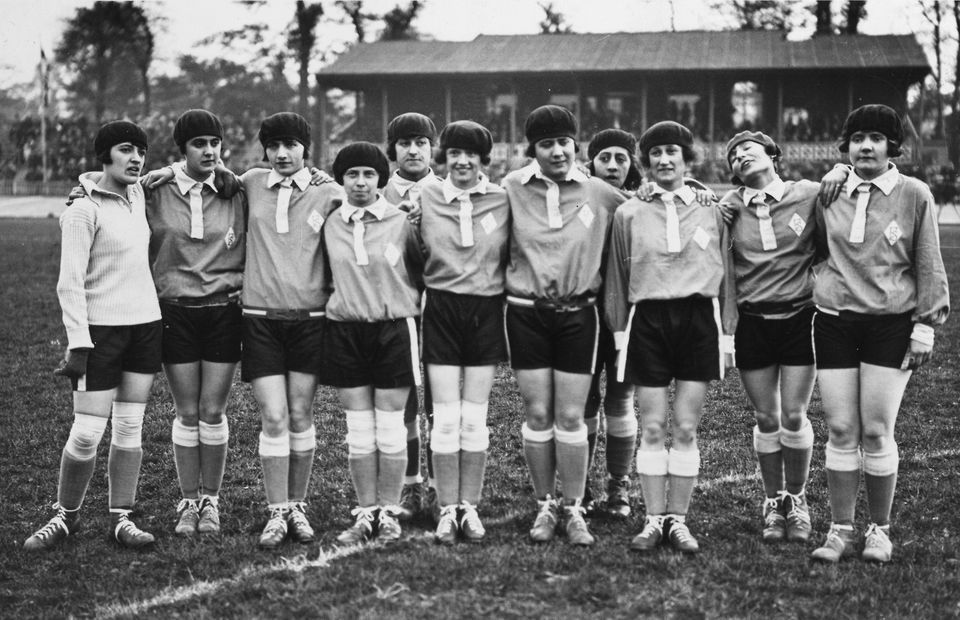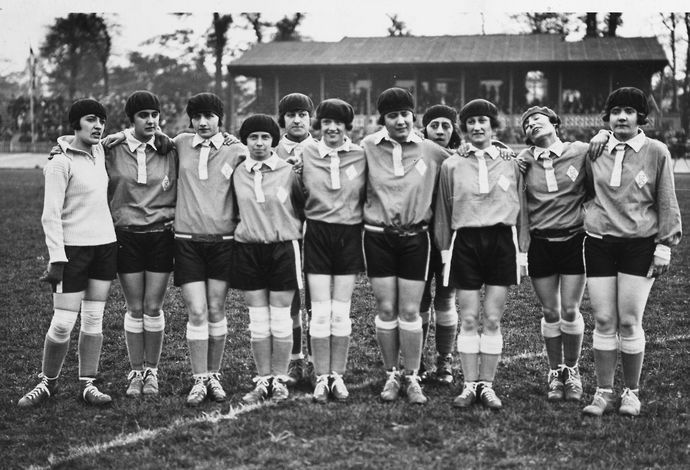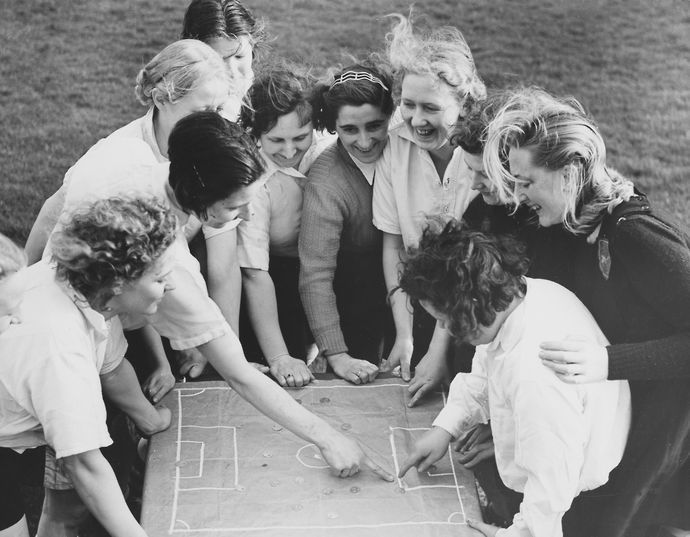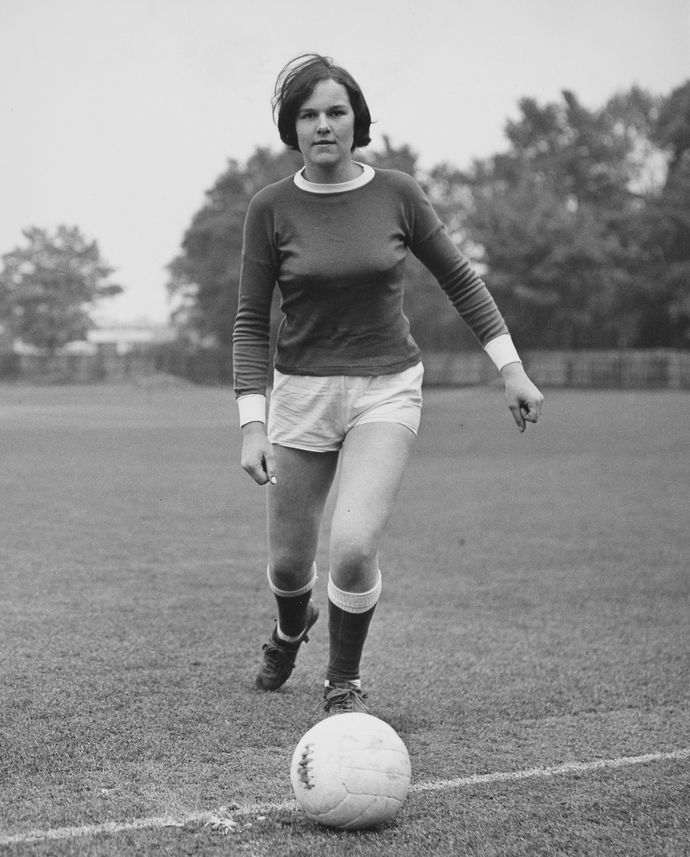Visit the streets, playgrounds or football pitches of England, and you will almost definitely find a mass of children playing "Wembley".
The backdrop may be an alleyway behind a row of houses, or a local park with bored parents watching on. But the players imagine the world-famous stadium with its iconic arch as they doggedly try to get the ball into the game’s single net.
Until just a few years ago, the dream of playing at Wembley was only tangible for boys. For girls, there was almost no point fantasising about walking out onto the perfectly manicured pitch – women did not play there.
Later this afternoon, however, Chelsea’s Magda Eriksson and Arsenal’s Kim Little will lead their respective teams out at Wembley to play in the Women’s FA Cup Final. It is now the seventh time the tournament’s grand finale will be played at the stadium.
This particular FA Cup Final should have been played last year, but the latter stages of the competition were postponed as a result of the COVID-19 pandemic.
The FA’s decision to reschedule the final for December 5th was a calculated one – the match will now coincide with the 100th anniversary of the ban on women’s football.
As the stars of Arsenal and Chelsea take to the pitch at Wembley this afternoon, they will demonstrate just how much progress has been made from the dark years of the 20th century.
The ban on women’s football
On December 5th 1921, the FA outlawed women’s football in England. The ban, which was not lifted until 1971, undeniably changed the course of the women’s game forever.
Women’s football can now be watched live on TV, and attendance figures at Women’s Super League are normally in the thousands. This hasn’t always been the case, however, with the women’s game receiving barely any attention at the turn of the century.
It is easy to believe this was the status quo since time began. But women’s football enjoyed a meteoric rise in popularity during the First World War.
With the men at war, thousands of women broke through gender norms and took up traditional male roles in munitions factories. They also laced up their boots and started playing football. One team in particular went on to become an international sensation.
"The Dick Kerr, Ladies were a munitions team, formed during the First World War to raise funds for wounded soldiers," explains Gail Newsham, a former footballer and expert on the history of Dick Kerr, Ladies.
"They played the first match on Christmas Day in 1917 at Preston North End, in front of 10,000 spectators. They raised £600 for the wounded soldiers. That would be worth almost £50,000 today, so they did a good job on the first outing.
"They carried on playing football throughout 1918, 1919 and 1920. In 1920, they played at Goodison Park on Boxing Day, in front of 53,000 people.
"I think that might have been a wake up call for the football establishment. At the end of 1920 and then throughout 1921, the Dick Kerr, Ladies played 67 games of football.
But by the end of the year, the FA banned the game, and as such, changed our history forever.
At the time, the FA claimed football was unsuitable for women. World War One was over, and people were expected to return to their old way of living. Women no longer worked in factories, and it looked like they would not be able to stay on the football pitch for much longer.
Newsham believes the FA implemented the ban as they were concerned about the high attendances at women’s football matches.
"In 1920, the Football League was expanded," Newsham says. "It was practically doubled in size, and they had a new division three, north and south, to populate.
"So, when women's football is attracting such huge crowds, you can see that it might be a bit of conflict of interest, and reduce attendances at men’s matches.
"Almost 900,000 people came to watch the Dick, Kerr Ladies in 1921. My theory is that women's football was a threat, and they got rid of it."
Fifty years in the wilderness
The ban on women’s football lasted for an astonishing 50 years. Some teams, including Dick, Kerr Ladies, continued to play as much as they could, but it was not easy.
"Whenever the women tried to play, if they were anywhere near a ground that was under the jurisdiction of the FA during the ban, they were jumped on straight away," Newsham says.
"They were told that women's football was bringing the game into disrepute."
As women’s football in England withered, the men’s game went from strength to strength, setting the foundations for the multi-billion pound industry it is today.
It is why women and men’s football should never be compared. The men’s game will always be ahead in terms of popularity and resources – it had a 50 year head start.
We were almost 50 years in the wilderness, so we have a lot of catching up to do
"There’s still a lot of misconceptions about the women’s game, that it’s not fit for females, and we still have all those barriers to break down. They still exist today, there’s no getting away from it.
"Where would we be if there wasn’t a ban? I don't know. It’s one of those things we'll never know. We can only surmise.
"My own personal thought on it is, if there hadn’t been a ban, we might have needed a Billie Jean King or somebody like that to come along. In most sports, women have had to fight for equality, whether it’s athletics or tennis.
"We would have needed a figurehead to guide us, even without the ban."
As Newsham suggested, it is impossible to know where women’s football would be without the ban. It is possible to inform people of the ban, however, and help football fans understand why it is so important to ensure the women’s game receives adequate attention and support.
"Within the game, people are beginning to know more," Newsham says. "But there's still an awful lot of people that don't know that the FA banned women’s football, and they don't know why they thought that women shouldn't play.
"We are making progress. The London 2012 Olympic Games changed things for us, and we've gone from strength to strength since then.
"Now we’re getting more television coverage, and the game can only grow. But I don't think enough people know about the ban, and understand why we're in the position we're in."
With the FA set to mark the 100th anniversary of the ban on women’s football during the FA Cup Final, it will be a stark reminder of how far the game has come, and how far is left to go.





















